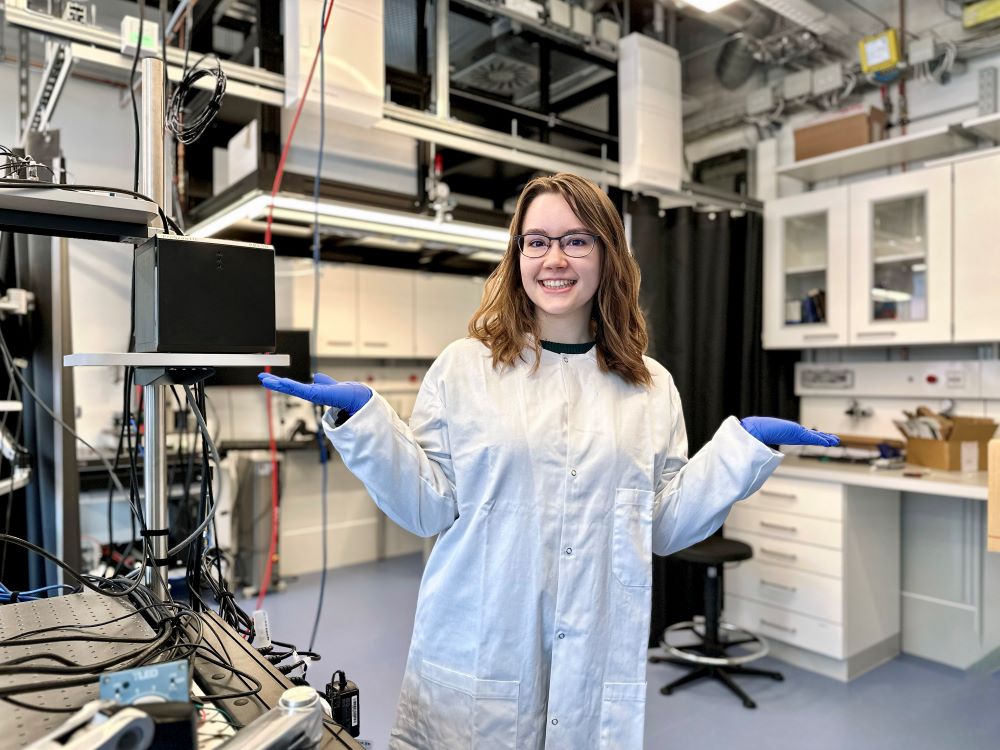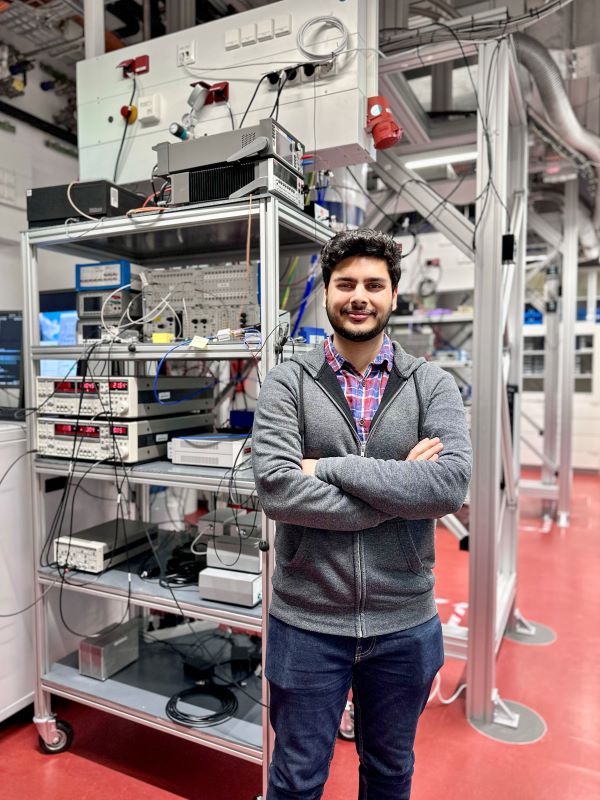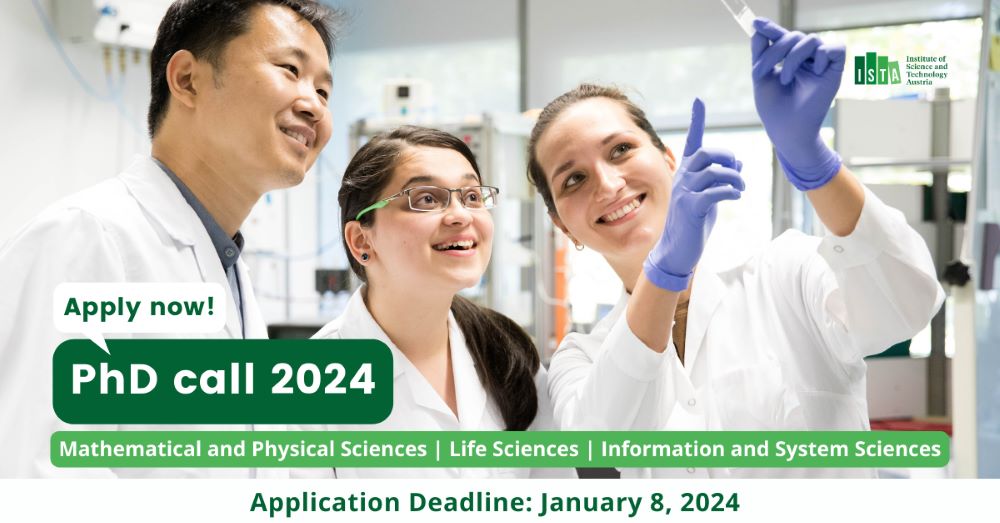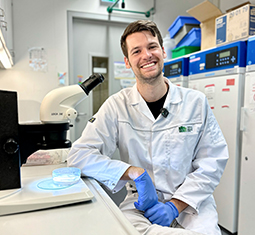December 20, 2023
Spark a (Research) Flame 3
Co-affiliation enables interdisciplinary PhD thesis projects
Depending on their interests, PhD students at the Institute of Science and Technology Austria (ISTA) have the opportunity to pursue their thesis project and research under the mentorship of two professors. Malina Strugaru gives insights into what that looks like, while Soham Mukhopadhyay, approaching the end of his PhD journey, reflects on his experience at ISTA. Finally, they both share some helpful insights for PhD applicants.

Malina and Soham, what inspired you to pursue a PhD at ISTA?
Malina Strugaru: I found out about ISTA while browsing for internships during my second year as an undergraduate. Unfortunately, I didn’t do an internship back then, but I remembered the Institute when I started applying for PhD programs. The interviews during the application process eventually convinced me that ISTA was the perfect fit for me. Although the interviews were technical, the atmosphere was very friendly, and the whole discussion was filled with helpful feedback from the professors.
Soham Mukhopadhyay: I did both my Bachelor’s and Master’s in physics in India. I worked on designing a superconducting quantum circuit during my Master’s thesis and consequently got interested in the research field of quantum devices. Discovering ISTA’s strong presence in this research field influenced my decision to pursue a PhD here.
Malina, you are co-affiliated with two groups, how come?
MS: As I’m very interested in computer science, I planned my first two rotations accordingly. My initial choice was to affiliate with Bernd Bickel’s group in computational design. However, in my third stint, I worked in the soft matter lab with Jérémie Palacci. It turned out that I was also very intrigued by his research, so I decided to join both groups. By affiliating with two groups, I was able to get to work on topics that I found most exciting, while also having a great support system and guidance from fellow PhD students and postdocs in the groups.
Was it a smooth transition from working with one group to two groups?
MS: It took a bit of time to pick a research direction that made sense for both groups and to figure out how to be part of two teams at the same time, but things worked out in the end, and now it just feels natural.
What are you currently working on?
MS: My thesis project is a mix of experimental material science and computational simulations. I work with materials that look like rubber—they shrink under heat and go back to their initial state when they cool down. I study their deformations in the lab and then try to model their behavior. Ultimately, I’d like to utilize them in soft robotics applications (a branch within robotics focusing on crafting robots using flexible materials rather than rigid links).

Let’s stick with research. Soham, what’s your project about?
SM: I’m part of Andrew Higginbotham’s research group and work in the field of superconducting quantum devices, with a focus on many body quantum phenomena. Particularly, I study the superconductor-insulator phase transition arising in a one-dimensional chain of Josephson junctions. This is a quantum phase transition that occurs at very low temperatures and can be studied in a controlled environment in the lab.
You’re almost approaching the finish line of your PhD journey, could you provide some insights into your experience at ISTA?
SM: Throughout my PhD journey, ISTA has been very supportive. Starting from housing (PhD students can live in on-campus apartments) to sorting out administrative matters, I always got the help I required. Both the faculty and the research facilities are excellent. It’s a truly collaborative environment where colleagues went out of their way to help me. As a fresh graduate student studying quantum devices, I naturally faced challenges while fabricating devices on a nanoscale. The staff from ISTA’s Nanofabrication Facility has been amazing, even during occasional late sessions or weekends. The same applies to my supervisor, who always supported me with helpful and critical feedback. My PhD experience at ISTA has been rewarding and full of enriching experiences, preparing me for the next phase of my career.
Were there moments when you felt that pursuing a PhD might not have been the right choice for you?
SM: Of course, sometimes it can get tough, especially when your experiments are not working or your complex data analysis is not making any sense. Understanding the physics behind a specific phenomenon also turned out to be harder than I expected it to be. Perseverance is key, and communicating to your PI that you are stuck and need help will get you through the low points in your PhD.
From your perspective, what are the most important points to consider when applying to ISTA?
SM: From my perspective, before applying at ISTA, consider these questions: Do you possess a genuine passion for research? Have you identified your preferred research field for a potential PhD? Do you lean towards a purely research-focused environment or a more university-like setting?
Malina, as the application deadline approaches, do you have any last-minute advice for possible candidates?
MS: Try to figure out your genuine motivation and reasons why you should join ISTA, and use your application to express that. Also, use your statement of purpose (SOP) to describe the skills and insights you gained from your previous experiences, but stay away from just re-enumerating the bullet points in your CV.






